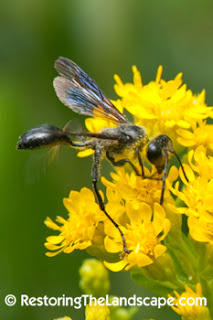
Grass-carrying wasps are a flower-visiting solitary wasp, common in late summer and early fall. Because they are solitary-nesting, and not colonial like yellowjackets or hornets, they do not sting humans to defend their nests. It’s an important distinction to make with wasps in our landscapes, so many are solitary and not aggressive.
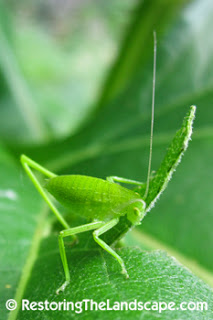 They perform important ecosystem services, pollinating the plants in our landscape, and preying on foliage eating insects, crickets and katydids in particular.
They perform important ecosystem services, pollinating the plants in our landscape, and preying on foliage eating insects, crickets and katydids in particular.
Females look for prey, stinging them several times to paralyze and immobilize them. They carry their prey back to their nests, which are preexisting cavities such as hollow stems or holes bored in wood.
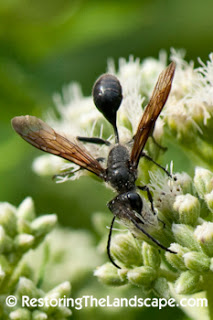 The prey are stocked for their developing larvae to feed upon. Using nearby grasses, nests are divided into sections with pieces of grass, they also close the end of nest with grass.
The prey are stocked for their developing larvae to feed upon. Using nearby grasses, nests are divided into sections with pieces of grass, they also close the end of nest with grass.
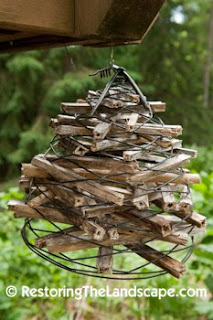 If you erect a mason bee nest board (board with nesting holes drilled in it), grass-carrying wasps will sometimes build nests in the cavities. Look for pieces of grass sticking out the ends of the board holes or plant stems.
If you erect a mason bee nest board (board with nesting holes drilled in it), grass-carrying wasps will sometimes build nests in the cavities. Look for pieces of grass sticking out the ends of the board holes or plant stems.
I have several different variations of stem nests hung in the yard for solitary bees (and wasps), this one in particular has been utilized almost exclusively by grass-carrying wasps. Cup plant and pale Indian plantain stems work extremely well, both are hollow.
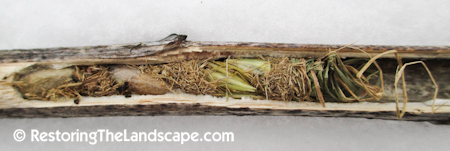 Here’s a cross-section of one of those stems with the wasp larvae and stocked prey. In my yard, the grass-carrying wasps like to use little blue stem to seal off the cavities.
Here’s a cross-section of one of those stems with the wasp larvae and stocked prey. In my yard, the grass-carrying wasps like to use little blue stem to seal off the cavities.
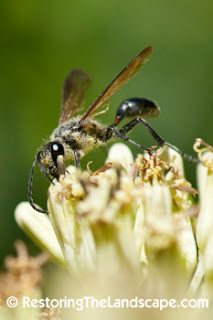 Look for grass-carrying wasps in late summer. In my yard, they like to visit stiff goldenrod, common boneset and pale Indian plantain flowers for nectar.
Look for grass-carrying wasps in late summer. In my yard, they like to visit stiff goldenrod, common boneset and pale Indian plantain flowers for nectar.
Article Posted From Restoring The Landscape Website
If You Are Interested In Purchasing Our Pollinator Seed Mix Please Visit Us At Our Website Native Wildflowers & Seeds From Ion Exchange, Inc.















